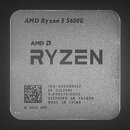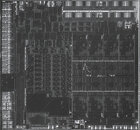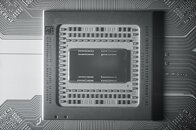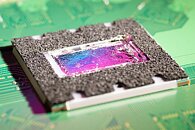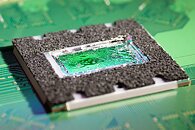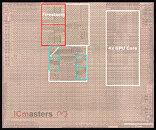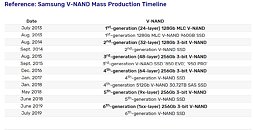
GPU Die Defects Found in PowerColor RX 9070 XT Graphics Card
Surface defects on the GPU die of a PowerColor Radeon RX 9070 XT Hellhound have been linked to excessive thermal hotspots, according to analysis following Igor's Lab's investigation. Microscopic examination revealed 1,934 pits across the silicon die surface despite proper thermal interface material application. The defects affect over one percent of the chip's surface area, with the largest measuring 12.59 µm in depth and 212.36 µm in diameter—significantly exceeding industry tolerances. These imperfections impede heat transfer, causing localized temperatures to reach 113°C, exceeding the 110°C threshold for RDNA GPUs and triggering thermal throttling. The defects appear to stem from flaws in the backgrinding process that thins silicon wafers for packaging. Improper process control creates surface irregularities that compromise thermal conductivity and structural integrity.
The discovery raises questions about the effectiveness of automated optical inspection systems in detecting subtle surface abnormalities. TSMC, the maker of these chips, uses optical recognition tools to see if any defects occurred. AMD stated: "We are aware of the reported issue and believe this to be an isolated incident. We are working with our partners and internal teams to understand the issue." The company maintains this is an isolated case, though the findings suggest potential gaps in quality control protocols. Users experiencing thermal issues with affected RX 9070 XT units should initiate the RMA process for replacement while AMD and PowerColor investigate whether these defects exist beyond the identified sample. We hope no further issues are present, and so far, PowerColor hasn't received any customer complaints. We are on the lookout for further situation development. We reviewed PowerColor's Radeon RX 9070 Hellhound, and found no issues on our unit, so this indeed remains an isolated case so far.
The discovery raises questions about the effectiveness of automated optical inspection systems in detecting subtle surface abnormalities. TSMC, the maker of these chips, uses optical recognition tools to see if any defects occurred. AMD stated: "We are aware of the reported issue and believe this to be an isolated incident. We are working with our partners and internal teams to understand the issue." The company maintains this is an isolated case, though the findings suggest potential gaps in quality control protocols. Users experiencing thermal issues with affected RX 9070 XT units should initiate the RMA process for replacement while AMD and PowerColor investigate whether these defects exist beyond the identified sample. We hope no further issues are present, and so far, PowerColor hasn't received any customer complaints. We are on the lookout for further situation development. We reviewed PowerColor's Radeon RX 9070 Hellhound, and found no issues on our unit, so this indeed remains an isolated case so far.



















































